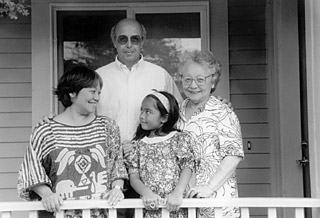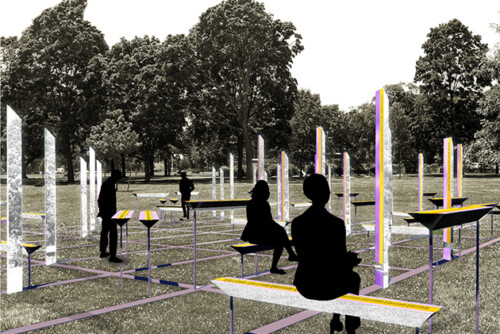Who could have imagined the impact of the September 11th terrorist attacks in New York City on women’s lives in Korea? And yet, only two hours after the World Trade Center fell, the following message concerning the welfare of a Korean baby who had been adopted by a US family appeared on a Korean Internet community message board.
Date: 2001.09.12 12:07
Subject: I am worried
The Twin Towers in New York were completely destroyed by terrorists. It was unbelievable. Some thousands of people lost their lives. I heard a few Koreans were killed. What if one of the numerous victims was related to my baby? . . . What if he was my baby’s father? . . . I shouldn’t think this way. The dream of my baby last night might tell me something, though. I wish I had contact information for her. I know my baby went to Minnesota but do not know where exactly. This worries me a lot. Maybe I should just think positively.
The Web site—아이를 입양보낸 엄마들의 슬픈 사랑이야기—provides a forum for Korean birthmothers and, as its translated title makes clear, a place where these women can share “The Sad Love Stories of Mothers Who Sent Their Babies Away for Adoption.” This article explores the ways in which contemporary Korean women who’ve given their babies up for adoption use Internet technology to “virtually mother,” that is, to mediate and negotiate the loss of both their children and their ideals of motherhood.
This Web site for mothers whose babies were sent away to adoption, was created, independently of any social service agency, by a birthmother in 2001, and quickly became a space where such women—usually young and unmarried and seen as transgressing both the social norms of feminine sexuality and middle-class, heterosexual, male-centered ideals of motherhood—can gather, speak out, process the complex and ambivalent feelings surrounding their losses, and organize.
I. History of Korea’s International Adoption and the Emerging Figure of the Birthmother
Korea has been known as a key supplier of children for international adoptions since the Korean War (1950-1953). In that time, an estimated 250,000 Korean-born children have been adopted by foreign families, three-quarters of whom have come to the United States, while the rest reside in Western Europe. Initiated as part of a war relief effort by humanitarian groups, the practice of international adoption has continued to the present day as a strategy to solve social problems, such as poverty, which is often identified in adoption discourse as a reason for Korea’s participation, and illegitimacy, which rarely is. Yet, Korean social work literature makes clear the connection between economics and women’s sexual lives: increasingly throughout the 1970s, children from extremely poor or from single-mother households were given over for international adoption. 1 Since then, the number of Korean children involved in international adoption increased every year through the late 1980s, and constituted, at its peak, almost 30 percent of all children involved in the transnational adoption. 2
In 1988, during preparations for the Seoul Olympics, the unscrupulousness of Korea’s adoption practices was brought to the fore by the US and European media, which accused the Korean government of exporting their babies for foreign currency. 3 In response, the Korean government promptly decreased the number of Korean children placed in foreign adoption by encouraging domestic adoption; nevertheless, the number of foreign adoptions remains at nearly 2,000 per year, still higher than the number of children placed in domestic adoptions.
At the same time that these adoption practices earned international criticism and became a matter of public controversy, the first cohort of Korean children adopted in the 1950s and 1960s were coming of age and returning to Korea. During their visits, many expressed an interest in searching for their Korean families and turned not only to governmental agencies, but also to the popular media to facilitate their search. Consequently, numerous television have featured the stories of adoptees searching for and reuniting with their birth families, particularly their birthmothers. The birthmother has become the ultimate figure to whom the adoptee is expected to return. Thus, the figure of the birthmother, whose historic place in adoption discourse was on the economic and/or moral fringes of society, takes on new (and newly important) significance.
Given this narrative, contemporary Korean adoption discourse is often reduced to the adoptee’s search and reunion, with emphasis on the adoptee’s success. This “success” relies on a certain portrayal of the birthmother, who typically figures in these shows as someone who was victimized by poverty and misfortune. And while a woman’s separation from her husband due to death or divorce is a common trope in these stories, women who had their children out of wedlock are notably absent. Adoption is thus constructed as a sad but necessary event, usually the best option for a child born into unfortunate but unavoidable circumstances. Upon the return of the adoptee, then, the birthmother is portrayed as if she had performed the highest, most selfless act of maternal love by choosing adoption for her baby. The reunion not only resolves the tensions and sufferings of both parties, but also creates an immediate bond between mother and child. They live, or so the story goes, happily ever after.
- J. Kim, Mee-hon-mo ui daehahn Yeonku (A study of unwed mothers), unpublished master’s thesis, Ewha Women’s University, 1974.[↑]
- Sara Kane, “The movement of children for international adoption: An epistemological perspective,” The Social Science Journal 31, no. 4 (1993): 323-339.[↑]
- Matthew Rothschild, “Baby for sale. South Koreans make them, Americans buy them,” Progressive (Jan 1988): 18-23.[↑]



